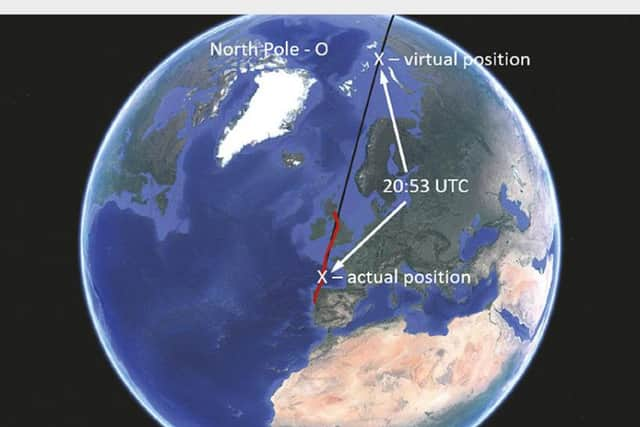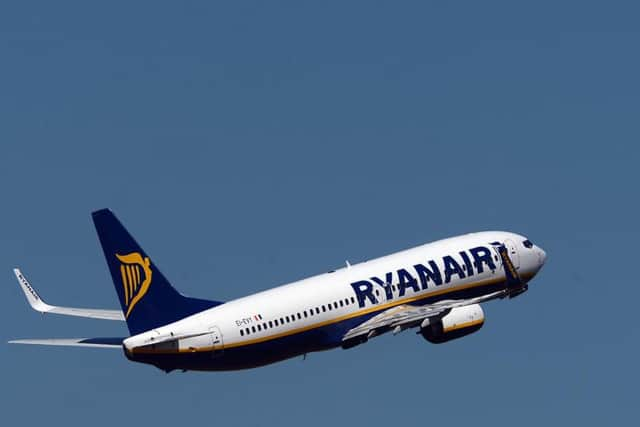Computer glitch showed Edinburgh-bound Ryanair plane near North Pole
Cockpit instruments on the Boeing 737-800 flight from Porto in Portugal identified its location as thousands of miles north of its position over the Bay of Biscay.
The five-month-old aircraft, which was carrying 177 passengers and six crew, was flown manually for the rest of its journey.
Advertisement
Hide AdAdvertisement
Hide AdThe glitch on 9 October last year was revealed in a report by the UK Department for Transport’s Air Accidents Investigation Branch (AAIB).


Plane maker Boeing has now amended its “quick reference handbook” checklist for such faults by updating guidance for pilots.
The AAIB said shortly after the aircraft reached its cruising height of 36,000ft after leaving Porto, “the commander’s attitude indicator malfunctioned, affecting numerous aircraft systems, and the aircraft climbed 600ft.”
It said after a significant time delay, a caution was displayed on the “inertial reference system” (IRS), which calculates the aircraft’s position.
“The crew followed the actions detailed in the quick reference handbook, but erroneous information continued to be displayed to the pilot in command and other systems were also affected.


“The aircraft was flown manually to Edinburgh where it landed safely.”
“The investigation found the left IRS suffered a transient fault which had led to an erroneous calculation of position.
“False position information led to the incorrect attitude information on the commander’s primary flight display and the autopilot responded by initiating a slow climb.”
Advertisement
Hide AdAdvertisement
Hide AdThe report said the crew “considered diverting to an alternate airport but, given the aircraft was controllable, elected to continue to the planned destination of Edinburgh.”
However, on approach to the airport they alerted air traffic control because they feared the malfunction could affect other aircraft systems.
The report said: “During the approach, they encountered erroneous airspeed and windshear warnings, and the autobrake system would not arm.”
"The roll issues noted by the co-pilot were more evident, but the crew were able to control them satisfactorily.
"The landing was uneventful, using manual braking, after which the aircraft taxied to the stand where the passengers disembarked."